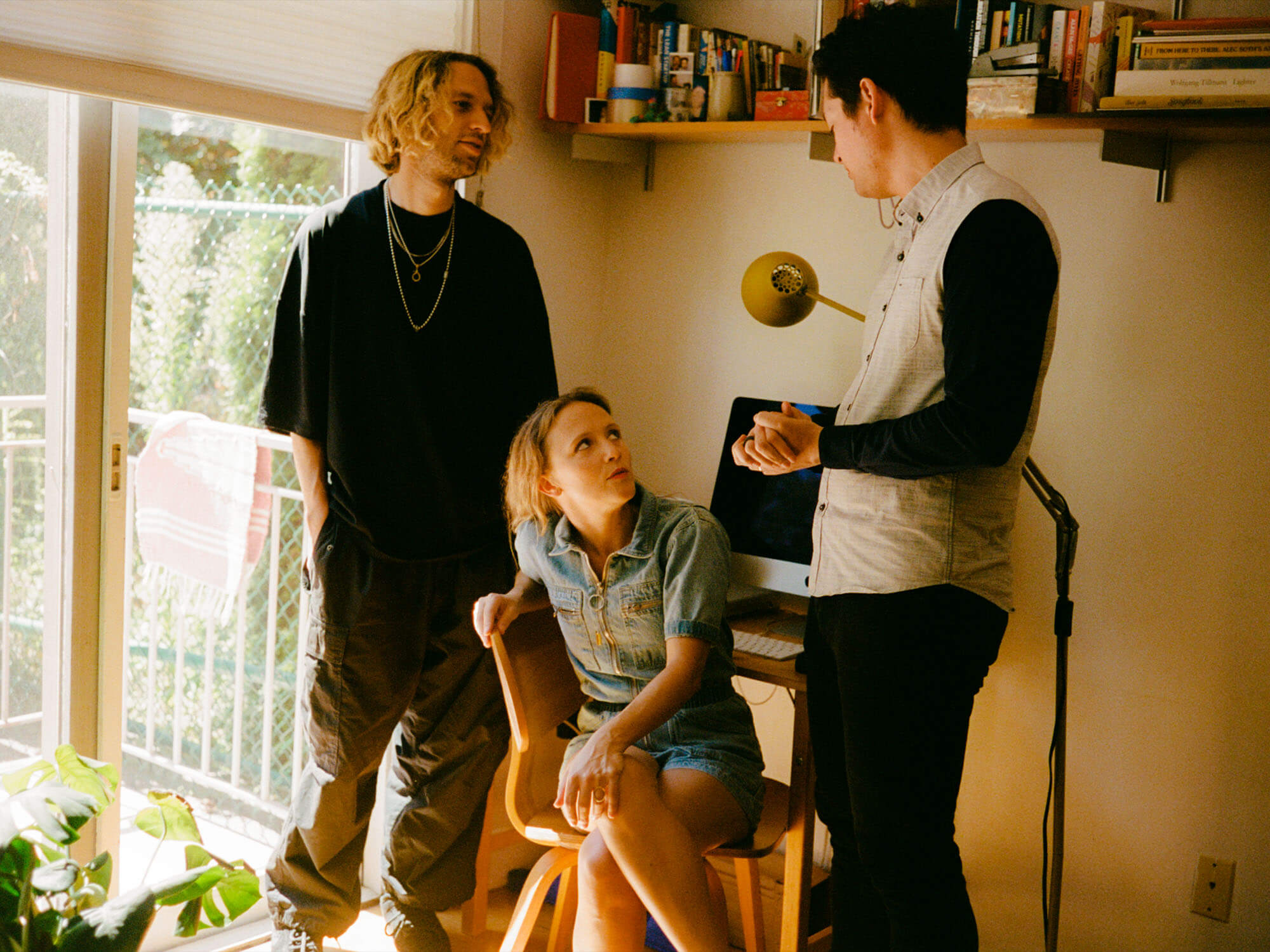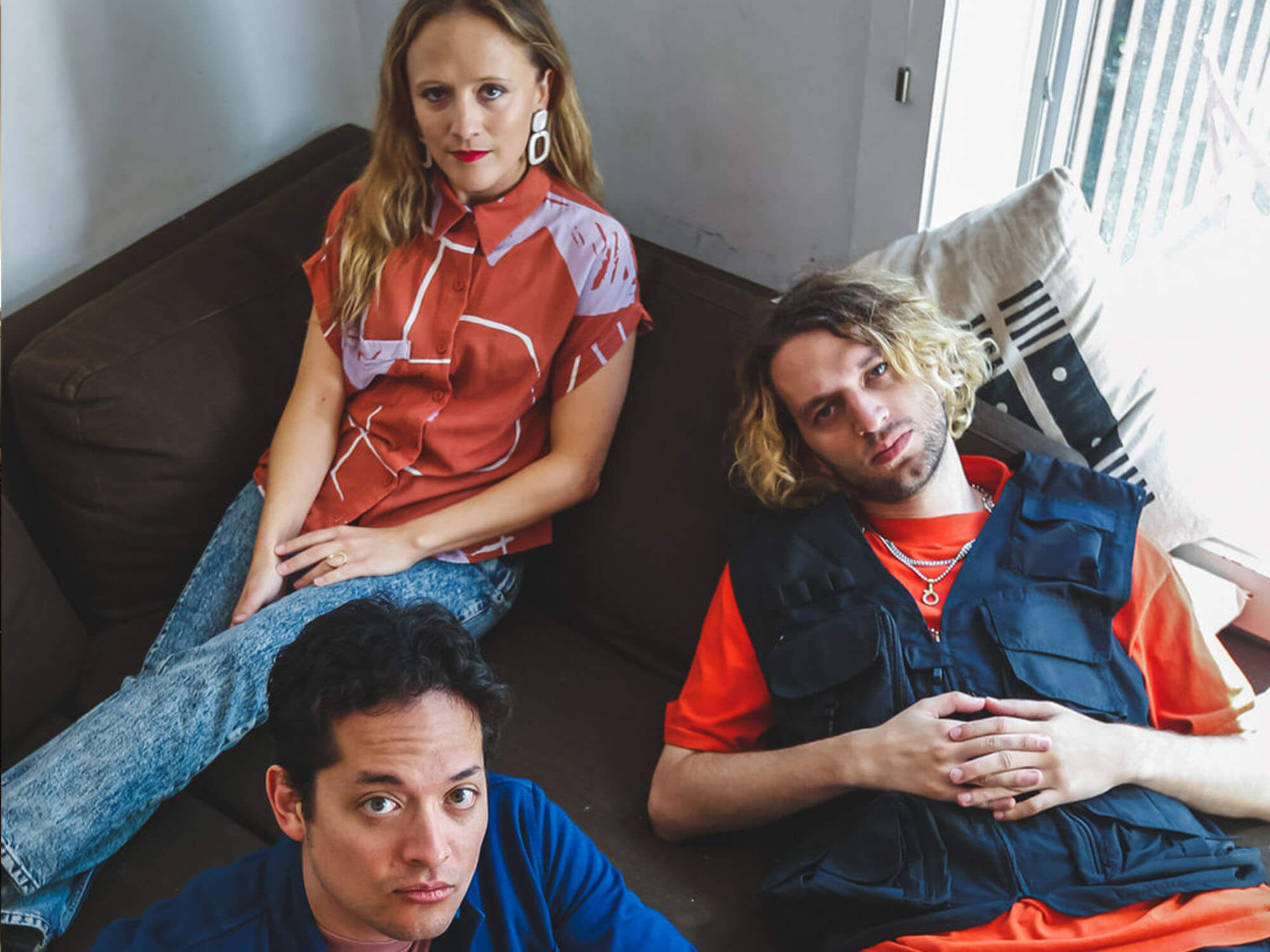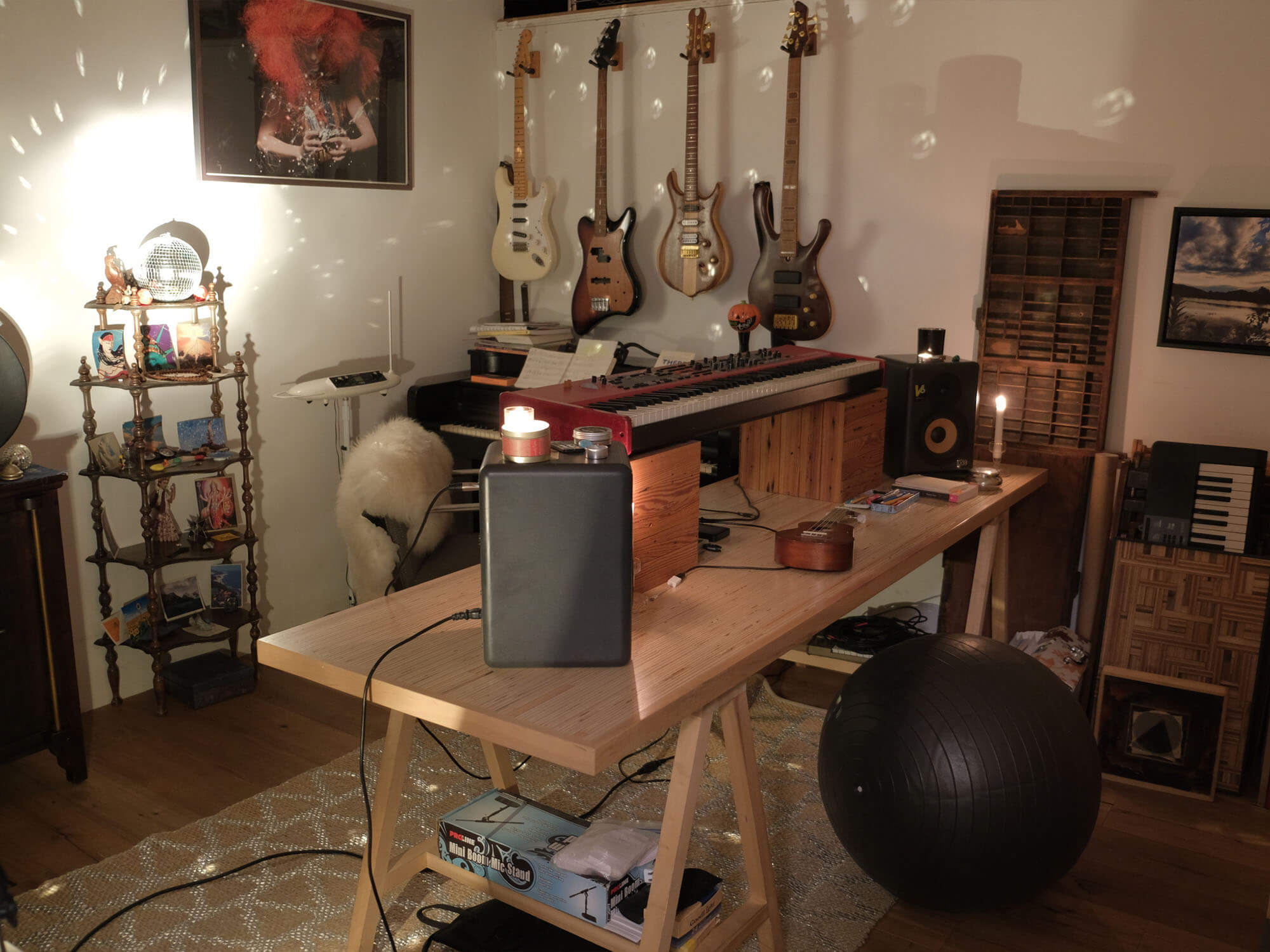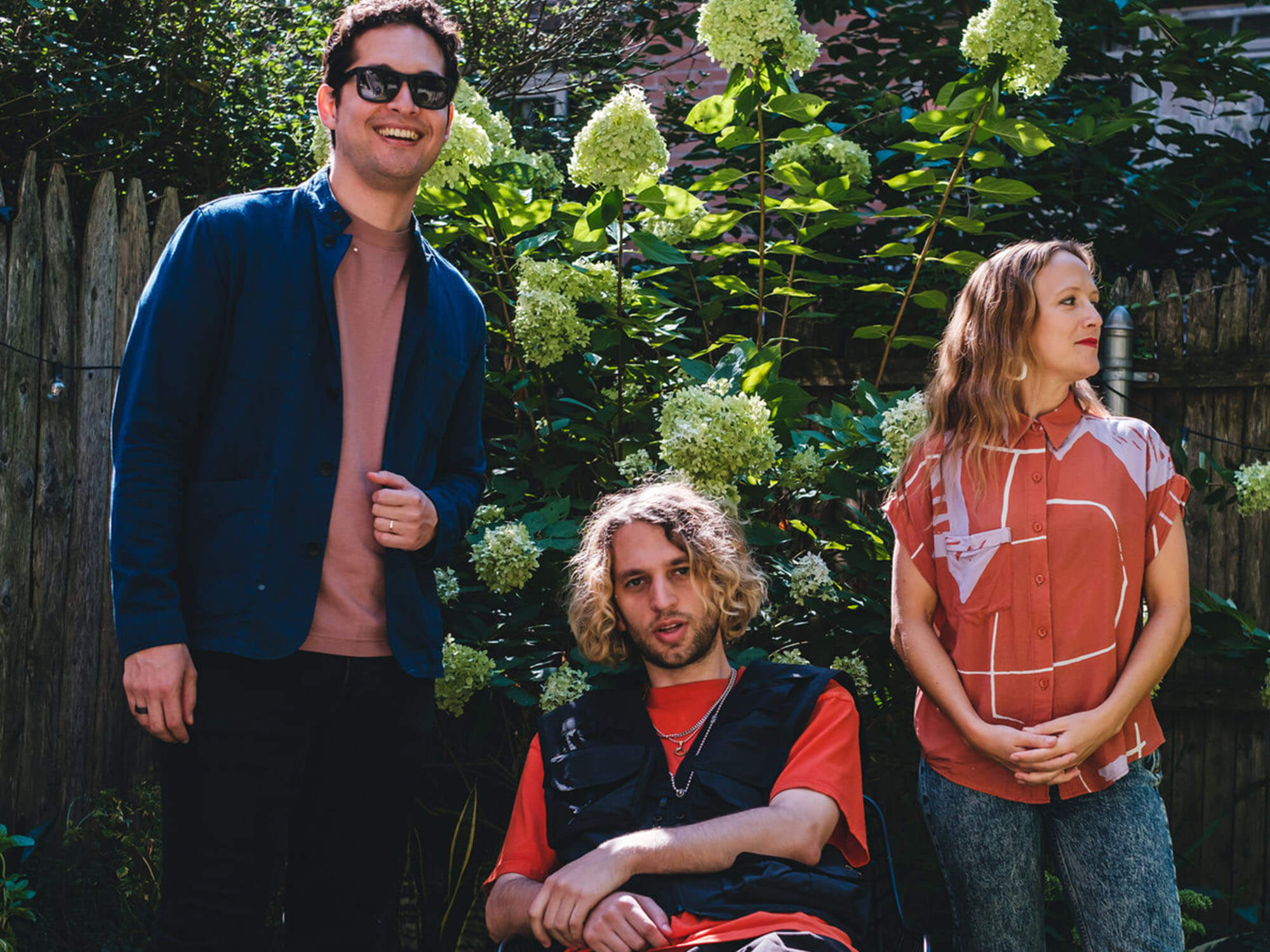isomonstrosity on making a chamber music album using a contemporary rap workflow
The album features Danny Brown, Vic Mensa and the International Contemporary Ensemble

Jelani Roberts
Isomonstrosity is the exciting new collaborative project formed of Johan Lenox – the go-to producer for the likes of Travis Scott, Lil Nas X and Selena Gomez – Pulitzer Prize-winning composer Ellen Reid and Julliard-trained conductor, Yuga Cohler.
On their debut self-titled album, the trio teamed up with Danny Brown, Vic Mensa, the International Contemporary Ensemble (ICE) and many more vocalists to produce a unique vocal chamber music album that used the same process as a contemporary rap album.
Full of contorted orchestral strings and woodwind instruments, lo-fi processed piano keys and brutal hit samples taken from remote recordings, the album takes classical music to a whole new arena, pushing the boundaries of what a listener views as rap music today. Of course, we were excited to find out more about how Lenox, Reid, Cohler and Joshua Rubin, a member of the ICE, came together with some the best rappers in the game to craft this astonishing debut album.
Jonah, Ellen and Yuga – hello! The idea of this album is so unique and exciting. How did this collaboration come about?
Johan: We had been discussing a potential Lincoln Center concert to take place in the fall of 2020 with orchestral music composed by people outside of the traditional classical world. When live music shut down, we still wanted to make something, so we came up with the idea of making an album of chamber music over the internet, with composers sending scores to musicians, who sent audio to producers, who sent loops to vocalists to write to.
Ellen: All three of us are music nerds, so we’d have long, wide-ranging conversations about music – from Luciano Berio�’s Sinfonia to Kendrick Lamar’s To Pimp a Butterfly. Out of these conversations, and a desire to create a project possible within the constraints of quarantine, isomonstrosity emerged.
Yuga: The main theme of the album is the horror of isolation and the enormity of the human condition contained within it, which we all experienced during COVID. Each track within a song was recorded in isolation by a single performer; each song was produced entirely over email. The three of us met for the first time in person about a month ago.
How have you each used your individual skills on this album and what was it like to collaborate Vic Mensa and Danny Brown, among others?
Johan: The experience I’ve had working with a wide range of recording artists really impacted how this process went – the idea that if someone wants to change something, you can send them the stems and let them add or rearrange whatever they want and send it to the next person. This wasn’t something I had encountered much in classical music so it was exciting to get to bring my collaborators into that world, and I think they really ran with it.
While I have long standing relationships with Vic Mensa and some of the other vocalists, some of them like Danny Brown we had never met or worked with at all. They participated entirely off the strength of our idea and the uniqueness of the music itself, which was gratifying.
Yuga: Whereas Johan and Ellen are composers, I am a conductor. So while their business is the creation of music, mine is the analysis of music – it’s a less creative, but arguably more structured, pursuit. As such, I tend to be obsessed with form – how different parts of the music interrelate.

The goal of the album is to create a vocal chamber music album using the same process as a contemporary rap album. How have you applied chamber music and rap processes?
Ellen: Johan, Yuga and I are all fascinated by the idea of collage. Collaging virtually unrelated musical sounds can create exciting friction, drama and energy. There is a history of collage both in classical (Luciano Berio’s work and music concrète) and rap and this album was inspired by that shared history. We were excited to juxtapose the creative timbral sounds that are often explored in contemporary classical, or new music, in a way that is more idiomatic of rap.
Joshua: Chamber music captures the immediacy of musicians expressing themselves together. There is so much stylistic diversity in the chamber music that Ellen, Johan, and Yuga chose to represent on this album – my International Contemporary Ensemble colleagues are elegantly switching between big romantic gestures and minimal loops, ambient drone music, extended techniques, sound effects on their instruments, and improvised music on these tracks. Chamber music is always collaborative, but recording this entire project remotely allowed (and needed) a lot of back-and-forth detail between composers and players that we don’t always get to experience in a traditional chamber music recording.
Yuga: The creation of this album was incredibly collaborative. In classical music – the medium all three of us were trained in – there is rigidity and inflexibility in terms of the roles involved: the composer writes the notes, the performer performs them as written, etc. With isomonstrosity, it was much more of a free-for-all experiment than it was a tidily conceived recipe. We asked composers to write fragments of chamber music, which were then recorded one instrument at a time by the members of ICEnsemble. We then took those recorded fragments and produced the hell out of them – splicing, rearranging, etc. We then combined them with the vocals of pop and rap artists, sometimes adding new music inspired by the vocals, etc.
Tell us a bit about where you made the album.
Ellen: I work in a home studio that is a room in my loft. My studio setup is fairly simple and I prefer it that way. Like Johan, I travel a lot for work, so I need to be able to take my gear with me to keep my creative flow going. Writing and creating is a deeply personal and spiritual process for me. When I’m at my desk in my studio, my view consists of three things: a painting of the ocean by my mother, my ‘shrine’ which consists of knick-knacks I’ve imbued with meaning, and a signed poster of Björk.

Ellen, what is your favourite piece of gear?
Ellen: My Clavia Nord Stage 2. I bought it at the beginning of the pandemic and it exceeded all of my expectations. Every patch sounds gorgeous, the user interface is simple and it records amazingly well. It feels like a whole world of sound is at my fingertips whenever I start to play it.
What synths and effects can be heard the most on isomonstrosity?
Ellen: On I Used To, I used my Nord Stage 2 to enrich the strings textures that were collaged underneath Kacy Hill’s vocals. You can hear various synth layers on this track. Otherwise, I used the overdrive and bitcrusher Logic Pro plugins to create different timbres and feels.
How were instruments recorded for the instrumentals on the album? Was it a case of building a bank of recorded samples to chop up and jam with via an MPC orr was there a different process of beatmaking?
Johan: I personally did all of my chopping and editing manually in Logic Pro – just dragging audio around. One thing that we found was that certain of the composers’ musical ideas ended up serving different purposes. For example, the composer Marcos Balter had a great droning vocal excerpt in his piece which ended up adding an ethereal texture that worked as an additional layer stretched across a lot of different types of music. Another composer, Wang Lu, gave us chaotic excerpts which worked really well chopped into transitions or intros whenever we wanted to really grab people’s attention.
Joshua: The instrumental chamber music was recorded in the early days of the pandemic – the pyjama days; the sourdough days. The ICEnsemble’s members recorded remotely from our homes in Brooklyn and Queens, Los Angeles, Chicago, and Pittsburgh, and it was an exciting opportunity to make music together during those lonely times. One of the players had small children in the room, others hung sheets around their space to make a recording booth for themselves.
I produced the recording sessions and edited them together, overdubbing the parts as needed to put together the larger chamber orchestra pieces. The stylistic range of the composers’ works are vast, from Wang Lu’s wild mash-up for orchestra, swirling lines of pure colour by Marcos Balter, Nina Young’s noisy clusters, impassioned string and wind solos from Ellen Reid, dense hymns by Bryce Dessner, and satisfying bassoon chorales from Johan Lenox. The common denominator is that our musicians know and love all these composers and their music so well, we had all of the context that we needed to record these pieces even sitting there by ourselves. The cherry-on-top for me was recording my clarinet part last, after I had layered my colleagues in the mix – it was like being there with everyone in the same room.

If you were left on a desert island, what one item would you take with you to make music with forever?
Johan: As someone who’s done substantial amounts of work for people by layering my vocals onto their records, all I really need is a vocal mic. I could remain pretty content for a long time as a one-man acapella group.
What is your top piece of production advice for anyone looking to create rap music in a refreshing way as you have?
Johan: The best innovations often come from combining two disparate elements. If people can tap into the music they have a personal connection to that comes from a different place, they might find inspiration trying to work that into their production style in a different genre.
Ellen: It’s important to not wait for permission. If you can envision it, just try it. It’s impossible to make anything with a point of view that everyone, everywhere will like.
What is the one piece of advice you would give someone starting out building a studio?
Ellen: If money is an issue for you, ask to buy gear off friends, check out reverb.com and Craigslist! You can always upgrade in time.
Stream or buy the album isomonstrosity via Bandcamp.